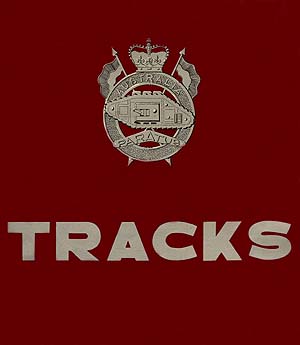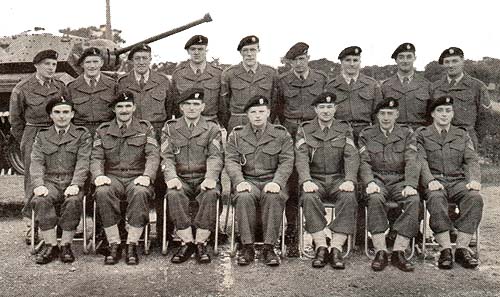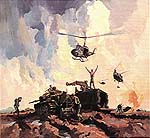Tracks Magazine - August 1955


A couple of decades ago I was travelling through northern NSW and called in to see Archie McDonald, an old 1 Armoured Regiment LAD mate. Archie had kept his copy of the first issue of the Regiment's glossy magazine, Tracks — August 1955. It is this magazine that is re-produced below
Tracks Magazine
Index
Foreword Preface Principles of Employment of Armour Tracks To Tradition Keep An Open Mind Review of Squadron Activities Regimental Headquarters Headquarters Squadron Reconnaissance Troop A Squadron Notes B Squadron Notes Nucleus Squadron Light Aid Detachment, RAEME Signals Troop, RASigsIndex (cont)
Review of Allied Armour Tanks in The Jungle Korean Sidelights Equipments 1954 .. A Royal Occasion On Parade Elevating Gear Officers' Mess Notes Sergeants' Mess Notes In The Realm of Sport It Could be You The Adjutant's Dilemma While Others Sleep [et al] Beauchamps Own Epilogue Free Verse From A Free Thinker
Regimental Training Troop

Growing pains early became evident in the life of the Regiment. One such symptom concerned crew training. To facilitate an improvement in this important aspect of Regimental efficiency, a training cadre was formed in early 1952-53.
This cadre operated by borrowing both instructors and equipment from the squadrons. This procedure soon showed serious shortcomings. It was then that the Commanding Officer, Lieut.-Col. C. J. Miles, directed that a Regimental Training Troop be formed. From May, 1954, all incoming recruits joined the Troop. The former training cadre was expanded so that:-
- It had an actual physical establishment, andwas not dependent upon detachments from squadrons.
- The Troop organization was to include
- The instructors necessary to conduct Regimental Courses.
- The equipment necessary to stage the courses.
- The accommodation in which to conduct the courses, and store the equipment.
- The personnel necessary to maintain its equipment and accommodation.
Role
The Troop to conduct the following Regimental courses:-
- Employment designation (D.P.3) courses in the following wings as required
- Wheeled Driving and Servicing.
- Tank Driving and Servicing.
- Tank Gunnery.
- Tank Wireless.
- Basic (D.P.4) refresher courses.
- Crew Commander courses.
- Such other courses as the Commanding Officer may direct.
Courses Completed
The following courses have been completed since the forming of the Trg. Troop:-
- Four Tank Driving and Servicing courses.
- Four Wheeled Driving and Servicing courses.
- Five Tank Wireless courses.
- Five Tank Gunnery courses.
- Three Crew Commander courses.
- Eight Basic Cadre courses.
- One each of Tank Wireless, Tank Gunnery, and Tank Driving and Servicing for Melbourne University Regiment.
- One Officer Refresher course (Tank Driving and Servicing).
- Assisted 20 National Service Training Battalion in R.A.A.C. Training.
The number of personnel having completed courses with Regimental Training Troop total 303.
From the above, it is obvious that the inauguration of the Regimental Training Troop was essential, and has played an important role in the training of R.A.A.C. personnel.
Staff
Lieutenant (now Captain) S. S. Agnew was given the task of forming the training troop, together with the following staff:--
- 3 Sgts., 2 Cpls., 3 L.-CpIs., 5 Tprs.
- also a Signals section consisting of 1 Sgt., 6 Signalmen.
In September, 1954, Lieut. D. R. Kepper took over the duty of Trg. Officer, and he was followed in May, 1955, by Lieut. W. E. Wells.


